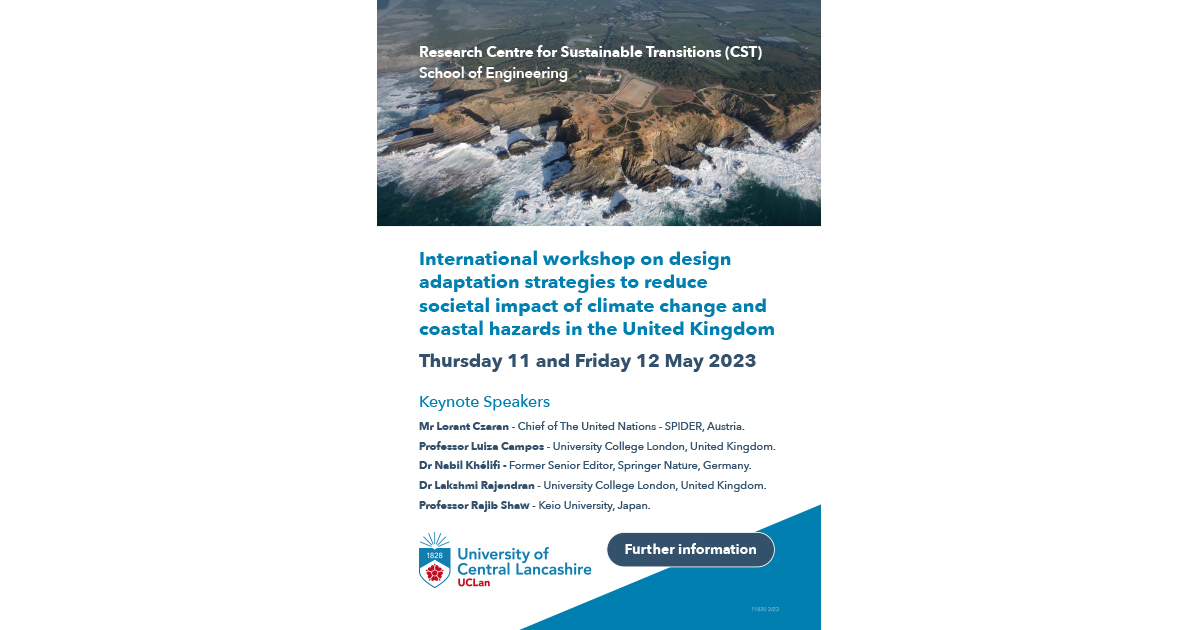Coastal Hazards Vulnerability, Disaster Management, and Climate Change Impacts: Adaptation and Mitigation Strategies
A special issue of Sustainability (ISSN 2071-1050). This special issue belongs to the section "Air, Climate Change and Sustainability".
Deadline for manuscript submissions: closed (30 June 2023) | Viewed by 17881

Special Issue Editors
Interests: climate change; GIS; coastal vulnerability; geo hazards; geomorphology
Special Issues, Collections and Topics in MDPI journals
Interests: landscape and coastal evolution; climate change; groundwater resources; urban water security
Special Issues, Collections and Topics in MDPI journals
Interests: disaster management; climate change; public health; public policy and management
Interests: climate change; urban heat island impact; disasters; sustainably energy
Special Issues, Collections and Topics in MDPI journals
Special Issue Information
Dear Colleagues,
Coastal regions are vulnerable to extreme weather, such as storms, which incur significant costs to coastal societies. As a consequence of climate change, global coastal communities are increasingly at risk from sea level rise and increased storm intensities. Rapid large-scale coastal infrastructure development, frequent strikes of intensive natural disasters, and temperature fluctuations increase coastal vulnerability. In developing countries, climate change influences can be catastrophic in terms of human cost, but with developed nations, there is also more of an economic challenge. Therefore, to inform coastal zone management, coastal vulnerability assessments with respect to present and predicted climate change scenarios are important.
The main emphasis of this Special Issue is current research on global and regional coastal vulnerability and coastal management and mitigation strategies for protecting coastal areas from diverse viewpoints. There is no geographical remit (study area) for the submissions.
In this Special Issue, original research articles and reviews are welcome. Research areas may include (but are not limited to) the following:
Subject areas include: (relating to the Special Issue)
- Coastal disasters;
- Coastal communities and infrastructure;
- Coastal vulnerability;
- Disaster management;
- Climate change;
- Vulnerability mapping;
- Adaption and mitigation;
- Risk assessment;
- GIS and spatial tools.
We look forward to receiving your contributions.
An international workshop on climate change and coastal hazards will be conducted on 11-12th May 2023 at EIC, UCLan.
The workshop organizers are pleased to invite you to submit an abstract or full paper to present at this international workshop within the remit of the following themes:
- Climate change and coastal vulnerability
- Risk assessment and coastal management
- Disasters and risk assessment
- New methods and strategies & remote sensing/satellite data
- GIS and vulnerability maps
Registration link with abstract/paper submission:
https://docs.google.com/forms/d/e/1FAIpQLSfcGbVxsLdTsZ6dvHt8ZEz4qN3t47jLecEC3bk2Jx6pL3pV7w/viewform
Registration link without abstract/paper submission:
https://www.eventbrite.co.uk/e/adaptation-strategies-to-reduce-impact-of-climate-change-coastal-hazards-tickets-580750910607?aff=ebdssbdestsearch
If you need further information, please contact:
Dr. Komali Kantamaneni
Email: [email protected]
Dr. Komali Kantamaneni
Dr. Andrew Barkwith
Prof. Dr. Sigamani Panneer
Dr. Carlos Jimenez-Bescos
Guest Editors
Manuscript Submission Information
Manuscripts should be submitted online at www.mdpi.com by registering and logging in to this website. Once you are registered, click here to go to the submission form. Manuscripts can be submitted until the deadline. All submissions that pass pre-check are peer-reviewed. Accepted papers will be published continuously in the journal (as soon as accepted) and will be listed together on the special issue website. Research articles, review articles as well as short communications are invited. For planned papers, a title and short abstract (about 100 words) can be sent to the Editorial Office for announcement on this website.
Submitted manuscripts should not have been published previously, nor be under consideration for publication elsewhere (except conference proceedings papers). All manuscripts are thoroughly refereed through a single-blind peer-review process. A guide for authors and other relevant information for submission of manuscripts is available on the Instructions for Authors page. Sustainability is an international peer-reviewed open access semimonthly journal published by MDPI.
Please visit the Instructions for Authors page before submitting a manuscript. The Article Processing Charge (APC) for publication in this open access journal is 2400 CHF (Swiss Francs). Submitted papers should be well formatted and use good English. Authors may use MDPI's English editing service prior to publication or during author revisions.
Keywords
- coastal vulnerability
- coastal hazards
- climate change
- vulnerability mapping
- GIS
- mitigation and adaptation
Benefits of Publishing in a Special Issue
- Ease of navigation: Grouping papers by topic helps scholars navigate broad scope journals more efficiently.
- Greater discoverability: Special Issues support the reach and impact of scientific research. Articles in Special Issues are more discoverable and cited more frequently.
- Expansion of research network: Special Issues facilitate connections among authors, fostering scientific collaborations.
- External promotion: Articles in Special Issues are often promoted through the journal's social media, increasing their visibility.
- e-Book format: Special Issues with more than 10 articles can be published as dedicated e-books, ensuring wide and rapid dissemination.
Further information on MDPI's Special Issue polices can be found here.








